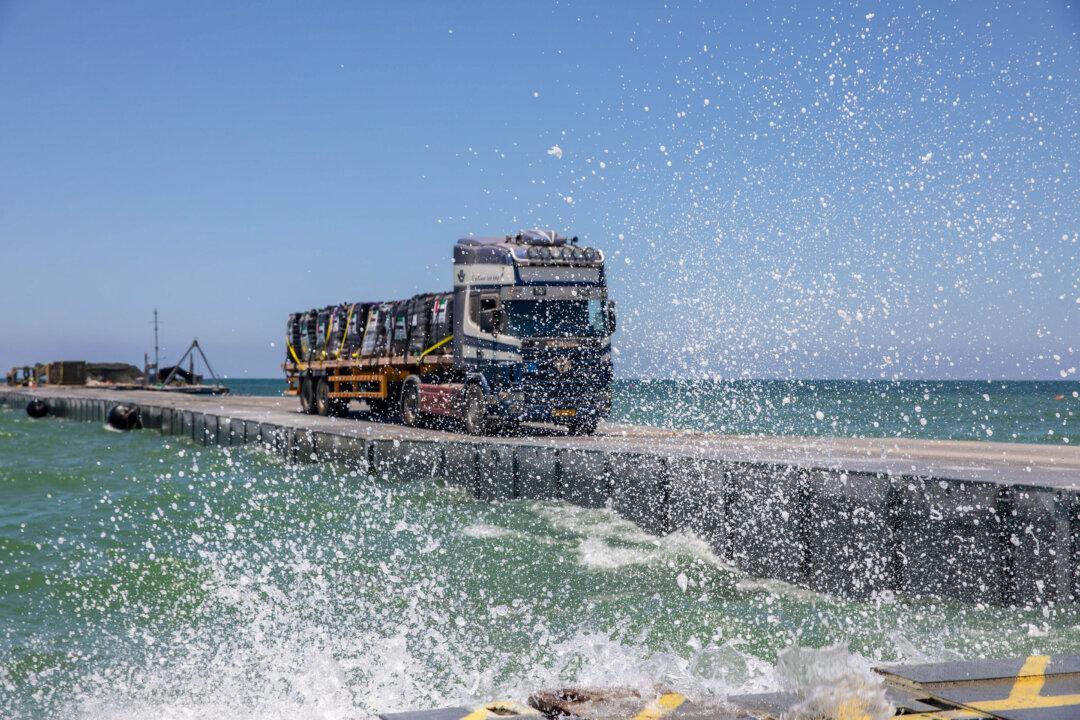President Joe Biden pushed for a maritime route to deliver humanitarian supplies to the Gaza Strip over the objections of U.S. Agency for International Development (USAID) officials, a new government watchdog report concluded.
The Office of the Inspector General for USAID published an evaluation of the short-lived maritime aid route on Aug. 27.





